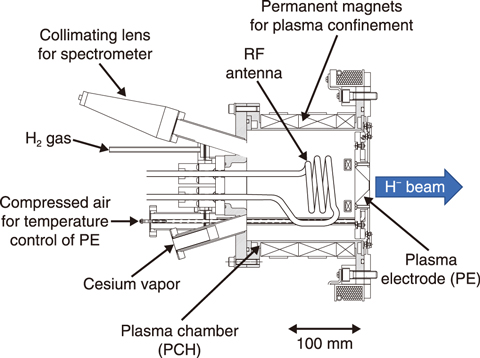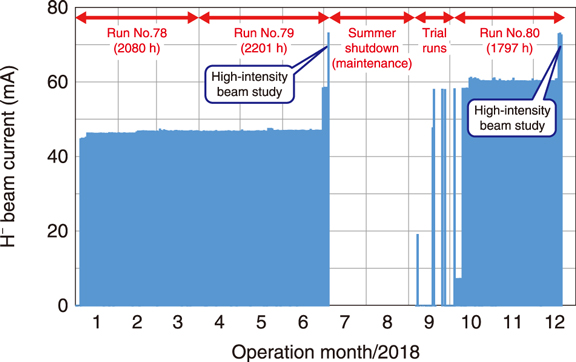
Fig.5-2 A cross-sectional view of the cesiated radio frequency (RF)-driven H− ion source

Fig.5-3 Operational history of the cesiated RF-driven H− ion source
A stable negative hydrogen ion (H−) beam with a beam current, pulse length, and repetition of 60 mA, 0.5 ms, and 25 Hz, respectively, was required to deliver a world-class beam with a beam power of 1 MW to the Materials and Life Science Experimental Facility (MLF).
Until 2014, H− beams were produced using a hot-cathode-type H− ion source, in which a hydrogen plasma is generated by energetic electrons emitted from a hot cathode. However, this ion source produced an H− beam with a maximum beam current of 17 mA and a maximum continuous operation time of approximately 1200 h. It was thus aimed to develop a radio-frequency-driven H− ion source (RF-IS) to obtain a higher current and longer operational time. A schematic of the J-PARC RF-IS is shown in Fig.5-2.
In the RF-IS, cesium vapor is introduced into the plasma chamber (PCH) to enhance the H− ions produced on the surface of the plasma electrode (PE), which is applied to −50 kV to extract the H− beam. The PE had a 45° tapered structure to produce the H− ions effectively and the PE temperature was controlled to optimize the cesium evaporation on the surface. As a result, the H− beam with a maximum beam current of 72 mA was injected into the linac.
The RF-IS had a problem of lifetime due to the damage of the RF antenna. We considered that the antenna failure is caused by the antenna surface breaking due to the collision of heavy ions in the PCH. As a result of removing impurities adhering to the inner wall of the PCH by repeating short time plasma generation and evacuation several times before beam operation (pre-conditioning), the antenna failure rate was succeeded in reducing less than one-third. Establishing this pre-conditioning method extended the lifetime of the antenna, and made great progress in the practical application of the RF-IS.
Operational history of the H− beam current extracted from the RF-IS is shown in Fig.5-3. Continuous operation for 2201 h was achieved from April to July. In July, the RF-IS was succeeded in supplying the beam for one hour at a 1−MW demonstration test of the MLF. Since autumn, the RF-IS has been supplying the H− beam to the linac with a beam current of 60 mA.
<Previous: 5 Applied Neutron and Synchrotron-Radiation Research and Development | Next: 5-2>